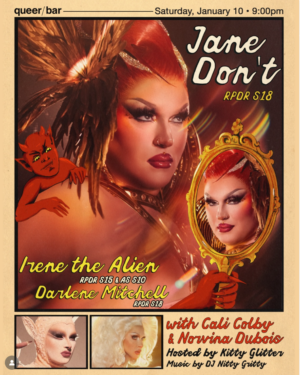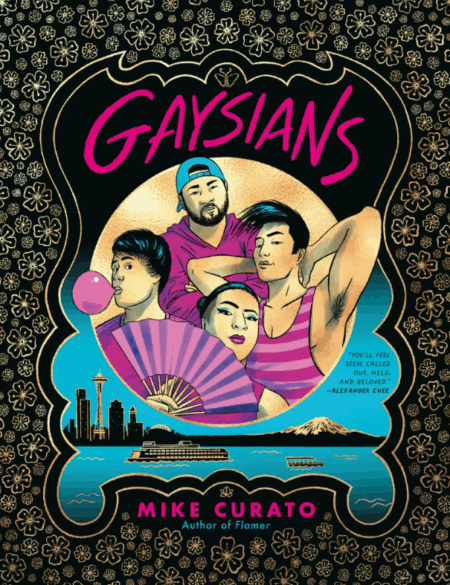Review: Lucia di Lammermoor. Music by Gaetano Donizetti. Libretto by Salvatore Cammarano. Conducted by Bruno Cinquegrani. Directed by Tomer Zvulun. With Aleksandra Kurzak, William Burden, Ljubomir Puskaric, and Arthur Woodley. Now through October 30 at Seattle Opera at McCaw Hall.
| Lucia is a bit mad. Photo by Rozarii Lynch |
I just realized that this is my second review in a row that deals with a Scottish soap opera. I reviewed GreenStage’s “Hard Bard” production of Macbeth yesterday, (and, didn’t much care for it), and now I’m tackling Seattle Opera’s current production of Donizetti’s “Lucia di Lammermoor” another work set in Scotland and based on a novel by Sir Walter Scott. Like Macbeth, Lucia deals with madness, murder, and some seriously dysfunctional family life in Scotland. Unlike GreenStage’s Macbeth, I very much enjoyed Seattle Opera’s take on “madness on the moors”. Their production of “Lucia di Lammermoor” is lucid, lush and hypnotic with fine performances from the singers, both vocally and dramatically, and exceptionally strong orchestral work from the Seattle Symphony and the guest conductor for this production, Bruno Cinquegrani. This briskly paced production had style, drama and a fresh approach to a very traditional operatic work. Director Tomer Zvulun was respectful in his reverence to the story and structure of the piece, but not afraid to shape and mold the work to meet the expectations of modern audiences. And, for this production, we are blessed with the presence of two young, attractive, modern performers: the familiar face of tenor William Burden as Edgardo and the exciting debut of Polish soprano Aleksandra Kurzak as Lucia. Both were excellent in their roles and performances, with special attention paid to Ms Kurzak and her commanding and assured work in the acclaimed “mad” scene in Scene 1 of the third act. It was a mesmerizing and powerful piece of singing AND acting. She is a major find and must be invited back to work on the stages of Seattle Opera.
For those of you unfamiliar with the plot of Lucia di Lammermoor, I’ll fill you in, but really, if you ever watched the primetime soap opera “Dallas”, you’ve pretty much seen most of it there…The Ashton’s of Lammermoor are a noble family but they’ve lost most of their money, power and prestige. Enrico Ashton has arranged to marry off his sister Lucia to a richer, more powerful man which will help restore the Ashton family name. Only problem is, Lucia is in love with Edgardo, Lord Ravenswood, a bitter rival of Enrico and the Ashton family. The lovers meet in secret and pledge their troth but after Edgardo leaves for the continent on business, Enrico forces Lucia to sign a marriage contract to the wealthy Arturo Bucklaw. (yes, it is confusing that the characters have Italian first names and British/Scottish last names…) Edgardo returns as the families celebrate the engagement of the bitterly unhappy Lucia to Arturo and in jealous fury at this betrayal, Edgardo curses Lucia and leaves her even more distraught. The marriage takes place, but on her wedding night, the now mad Lucia stabs Arturo to death and before the horrified eyes of her family and the wedding guests, completely goes off the deep end and finally collapses. The final scene of the opera finds Edgardo unable to bear the loss of his love, and once he discovers that Lucia has died, he stabs himself and cries that god will unite them in Heaven.
Yes, it is very melodramatic, but the great operas do tend to be larger than life…besides, who wants to see a opera about ordinary people doing ordinary things? Lucia is about extraordinary people doing ridiculous things, and that’s part of the fun and drama of grand opera. And, it could be easy to overdo the melodrama and make it ridiculous, or attempt to modern it up and make it more contemporary, but wisely the director Tomer Zvulun manages to respect the traditions of the work while keeping the performances fresh and vital and interesting. Everything is staged very classically, but Robert A. Dahlstrom’s handsome multilevel set with numerous staircases in different configurations allows Mr Zvulun the freedom to create interesting tableaus with characters at different levels and heights. And, the casting of young, attractive, fit singers with more modern approaches to acting gives the work a freshness and vitality lacking in productions from the past. The majority of the characters in Lucia are young, or at least, youngish, and the singers in this production are age appropriate and attractive, vital and sexually appealing characters. This isn’t Grandma’s opera with 50 year old, traditionally rotund opera singers pitching woo. Ms Kurzak and Mr Burden are appealing personalities and they make a handsome couple; it’s exciting watching their romance develop and tragic when the relationship is doomed to failure. Because you believe in the possibility of their attraction, they are relatable and appealing to the audience.
| Lucia (Aleksandra Kurzak) and Edgardo (William Burden) pitch woo. Photo by Rozarii Lynch. |
Of course the $64,000 question when it comes to any production of “Lucia di Lammermoor”: “Is the “Mad Scene” any good?” After all, “the Mad Scene” is to “Lucia” what “I’m telling you, I’m not going” is to “Dreamgirls”, or what “Rose’s Turn” is to “Gypsy”. It’s the money shot, the raison d’etre for the whole shebang, and the question is always going to be, “Did the soprano pull it off?”
And the answer is a resounding yes. Aleksandra Kursak gives a nuanced but heartbreakingly anguished performance in the scene. She is definitely “mad” and gone off the deep end, but the singer never overplays it or goes too broad. It’s a dramatic performance and a powerful performance but it’s never unhinged and it’s very finely controlled and precise without feeling contrived. I knew it was coming, and I was looking forward to it and knew what to expect, but her passionate performance still left me with chills. And, Ms Kursak was only enhanced by the beautiful, beautiful sublime work of flutist Scott Goff as both Ms Kursak’s voice and Mr Goff’s musicianship entwined to create a duet of exquisite clarity in the most heart wrenching moments of the aria. Very, very fine work from both artists.
I also much enjoyed the robust, masculine performance of William Burden as Edgardo and especially the modern muscularity of his voice and his beautifully inflected Italian accent. So often in opera, the language is a bit flat and accentless, but Mr Burden’s Italian actually sounds like it’s being spoken like real Italian speak it, with a lovely robustness that is uniquely Latinate and authentic. Equally good, and an audience favorite, was bass Arthur Woodley as Raimondo, the priest and tutor to Lucia. His powerful and strong voice infused Raimondo with passion and character and was very much the mortal heart of the show.
| Robert A. Dahlstrom’s lovely graveyard set for Act III, Scene 2. Photo by Rozarii Lynch. |
The usual excellent work from Seattle Opera’s design teams. I’ve mentioned Mr Dahlstrom’s multi-tiered master set, which I enjoyed, and the final set in the graveyard was also memorable and haunting. This production of “Lucia” was actually set in the authentic period of the original production, and Deborah Trout’s mid 18th century costumes were lushly authentic and appropriate to the period as well as pleasing to the modern eye. And, Robert Wierzel’s lighting design was both crisply professional as well as artistically compelling, with special attention paid to his use of contrasting lighting schemes for the betrothal party scene that switched between a rich, warm, nostalgic umber hue and a stark, harsh, white light used to indicate the horror that Lucia was going through. It was powerful and cinematic lighting at its artistic best.
I highly recommend a visit to “Lucia di Lammermoor” and for people wanting to sample the opera for the first time, or to re-establish themselves, it’s an ideal choice: fast-paced, exciting, melodramatic with a beautiful and haunting score. For LGBTQ fans, you can still take advantage of Seattle Opera’s “LGBT Night”…for Lucia di Lammermoor, that is happening Friday, October 29.
– Michael Strangeways












